Search
Remove Ads
Advertisement
Summary 
Loading AI-generated summary based on World History Encyclopedia articles ...
Search Results
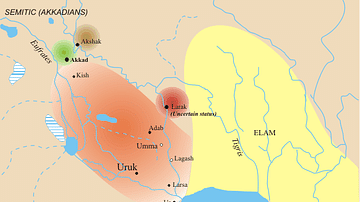
Definition
Uruk
Uruk was one of the most important cities (at one time, the most important) in ancient Mesopotamia. According to the Sumerian King List, it was founded by King Enmerkar c. 4500 BCE. Uruk is best known as the birthplace of writing c. 3200...

Video
Uruk 5000 B.C. Historical Simulation
Historical simulation showing everyday life of Uruk in Ancient Mesopotamia through the use of virtual reality and Artificial Intelligence. The historical site was reconstructed based on the results of archaeological excavations, settlement...
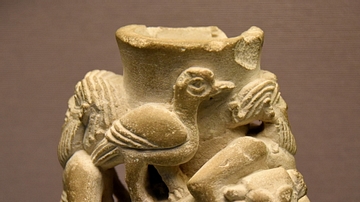
Image
Heroes Protecting Animals, Uruk
This ritual vessel shows nude heroes protecting a bird and a bull. Such heroes were popular images in ancient Mesopotamia. Late Uruk Period, 3300-3000 BCE. Probably from Uruk (Warka), Southern Mesopotamia, modern-day Iraq. (The British Museum...
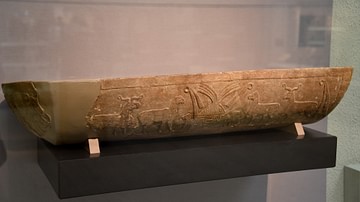
Image
The Uruk Trough
The Uruk Trough, one of the earliest examples of formal religious art from Mesopotamia. It was probably a cult object in the temple of Inanna (Ishtar); it cannot be used as a trough or basin. The carving shows sheep approaching a reed hut...
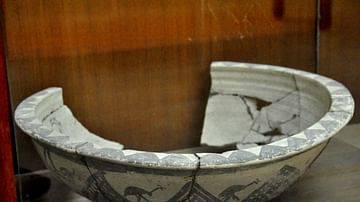
Image
Pottery Dish from Uruk Period
The outer surface of this large, partially broken, pottery dish is painted in black geometric shapes and pelicans ,while the inside (not shown) is painted with ibex figures. Uruk period, 3500-2800 BCE, Mesopotamia, Iraq. (The Sulaimaniya...
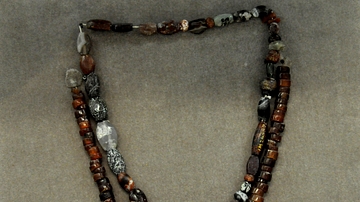
Image
Necklaces from Uruk Period
These two necklaces were made of red agate and were found inside a grave that dates back to the Uruk period, 4000-3100 BCE, Mesopotamia, Iraq. (The Sulaimaniya Museum, Iraq).
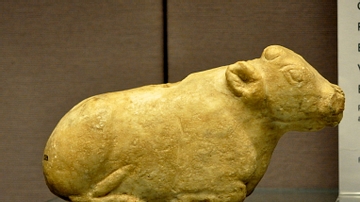
Image
Stone Calf from Late Uruk Era
There is a hole on the back of this stone calf for vertical posts or other attachments. Late Uruk period, 3300-3000 BCE, from Ur, Mesopotamia, Iraq. (The British Museum).
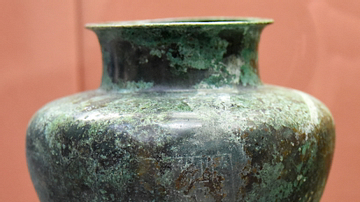
Image
Vase of Utu-Hegal of Uruk
This is only known bronze/copper alloy vessel inscribed with the name of Utu-Hegal, King of Uruk. Utu-Hegal was considered a hero, who drove the hated Gutian invaders out of Southern Mesopotmia. The inscribed cuneiform text mentions the name...
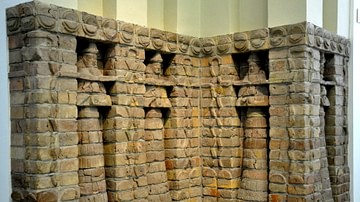
Image
Facade of Inanna's Temple at Uruk
Part of the facade of the temple of Inanna at Uruk. There are standing male and female deities in alternate niches. Each figure holds a vessel in his/her hands and pours life-giving water onto the earth. The cuneiform inscriptions on the...
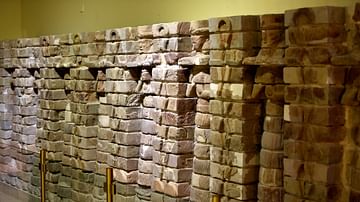
Image
Facade of Inanna Temple from Uruk at the Iraq Museum
This is part of the facade of the temple of goddess Inanna at Uruk (modern-day Warka, southern Iraq) and is made of bricks. There are standing male and female deities in alternating niches. Both hold a vase, pouring water in double streams...